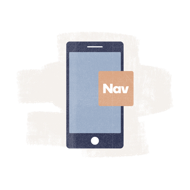When it comes to Pinterest, there seems to be two types of people in this world: those who pin and those who don’t. By the close of 2016, the young social platform was already boasting 150 million users, and today, 175 million people spend time scrolling through everything from food to technology. “That’s great,” you may say, “but how can that help my business?” Well, of those users, 87% claim to have purchased a product based on their Pinterest activity.
For many, those numbers are reason enough to begin their own Pinterest campaign, but where do you start? Or if you already have, are you doing it right? Every industry is different, but when it comes to Pinterest, there are some best practices to follow, and more importantly, some mistakes to avoid.
If you’re currently using or plan to use Pinterest to tap into a customer base, then steer clear of these common, yet problematic, Pinterest blunders.
1. You’re Using a Personal Pinterest Account
Pinterest provides two types of user accounts: personal and business. Both accounts will allow users to pin and engage with other users, and luckily, both are free. However, business accounts provide valuable tools for businesses that want to market products or provide rich content to users. If you are using a personal account, have no fear; personal accounts can easily be converted to business accounts.
Two of the most useful tools currently available to business account holders are analytics and rich pins. Analytics, as you likely assume, provides insight into user activity, which guide marketing strategies and content decisions.
In addition to analytics, business users can utilize Rich Pins. Rich pins allows account holders to provide additional information about a pin, which can help make it more relevant to users.
Rich pins come in four types: product, app, article and recipe. If you’re using Pinterest to market a product, you may find that product pins — which include real-time pricing and where-to-buy information — and app pins — which help users purchase your app — to be most useful. However, both article and recipe pins can be useful in generating relevant content as well.
2. Your Website Isn’t Optimized for Pinterest
It’s easy to think that the key to any Pinterest marketing strategy is found within your efforts on the platform itself, but starting and maintaining a Pinterest account for your business is only half the battle. From a marketing aspect, the goal of a Pinterest account is two-fold. First, you’ll want to engage Pinners and create brand awareness. Secondly, you’ll want to be able to convert those followers into customers.
There are several ways you can optimize your site, but if you plan to utilize Pinterest as a marketing tool, you’ll want to make sure you’ve completed the following:
- Confirm your website so that your logo will appear whenever users pin something from your site (branding), and so you can gain access to valuable analytics.
- Implement Pinterest tags on your website to track activity, like traffic and conversions, which will help optimize your efforts to target specific audiences.
- Add the Pinterest Share button to your website so users can share or pin products, posts, etc. of interest, which will increase engagement.
Having a presence on Pinterest isn’t just a potential acquisition channel for many business owners, it’s a necessity depending on the space you work in. For example, Etsy sellers can make major money off of advertising their products on Pinterest, creating a steady income flow that can not only keep you in the black, but make you look even more loan-ready down the road when you’re ready to expand and grow. That’s because cash flow can be a major factor in some types of business financing, along with your business credit score. You can check your business credit score for free on Nav.
3. You’re Not Doing Keyword Research
Pinterest may have the tell-tale characteristics of a social media platform, and businesses should create engagement strategies with that in mind, but when defined by basic functionality, Pinterest is a search engine — plain and simple. For that reason, any push to leverage Pinterest should include common Search Engine Optimization (SEO) efforts, especially keyword research.
Pinterest serves users pins that are most relevant for the keywords driving their search, so selecting the right keywords for the title and description of your pin will increase the chances that your results will show up.
Unlike SEO keyword research for engines like Google and Bing, there is no true magical tool outside of Pinterest to help you dig into data. Your best bet is to roll up your sleeves and do some manual labor, using the guided search results to help you formulate relevant keywords, paying special attention to long tail (three or four words) results.
4. You’re Not Engaging Your Audience
Speaking of engagement, there are a variety of channels by which you can reach consumers, but none are as effective at engaging them as social media. The nature of platforms like Pinterest, Twitter and Facebook require businesses to employ a certain level of customer service and interaction. Proper engagement can lead to positive brand awareness and customer loyalty.
Unlike tweets or Facebook posts that are quick to become buried in the flurry of online activity, pins that make their way from a feed to a board are there indefinitely. The goal is to encourage users to pin the information you’re sharing and to ultimately gain followers. Following users, commenting on pins and simply engaging with your loyal followers is a must. If you’re just pinning and praying for repins, then cultivating a loyal group of followers is going to be difficult.
5. You’re Ignoring User Diversity
There is this preconceived notion that Pinterest is a women’s club, and while some disparity does exist, the gap is closing and male usership has grown exponentially. According to Pinterest, there’s been a 70% increase in male sign-ups, and the playing field is evening out. Don’t pigeonhole your marketing initiatives by falsely believing that Pinterest is a ladies-only arena.
It takes more than gender awareness to create a universal Pinterest policy. Limiting your marketing efforts to U.S.-based customers can prevent global acquisition, which is a possibility since, according to Pinterest, more than 50% of users reside outside of the U.S. Of course, not every product or service is a candidate for global sales, but if yours is, and your analytics show a user base that spans the globe, you’ll want to use this information to not only guide what you pin (seasonality, needs, trends that may differ from the U.S.) but how your website does (or does not) accommodate global traffic (language accessibility, for example).
Though often underestimated, Pinterest can be a fierce contender in your overall marketing plan. By taking the time to leverage it properly and avoiding a few common mistakes, you may just find that it holds a special place in your short- and long-term social media strategies.
This article was originally written on June 14, 2017 and updated on June 16, 2017.



Cool, got everything covered.